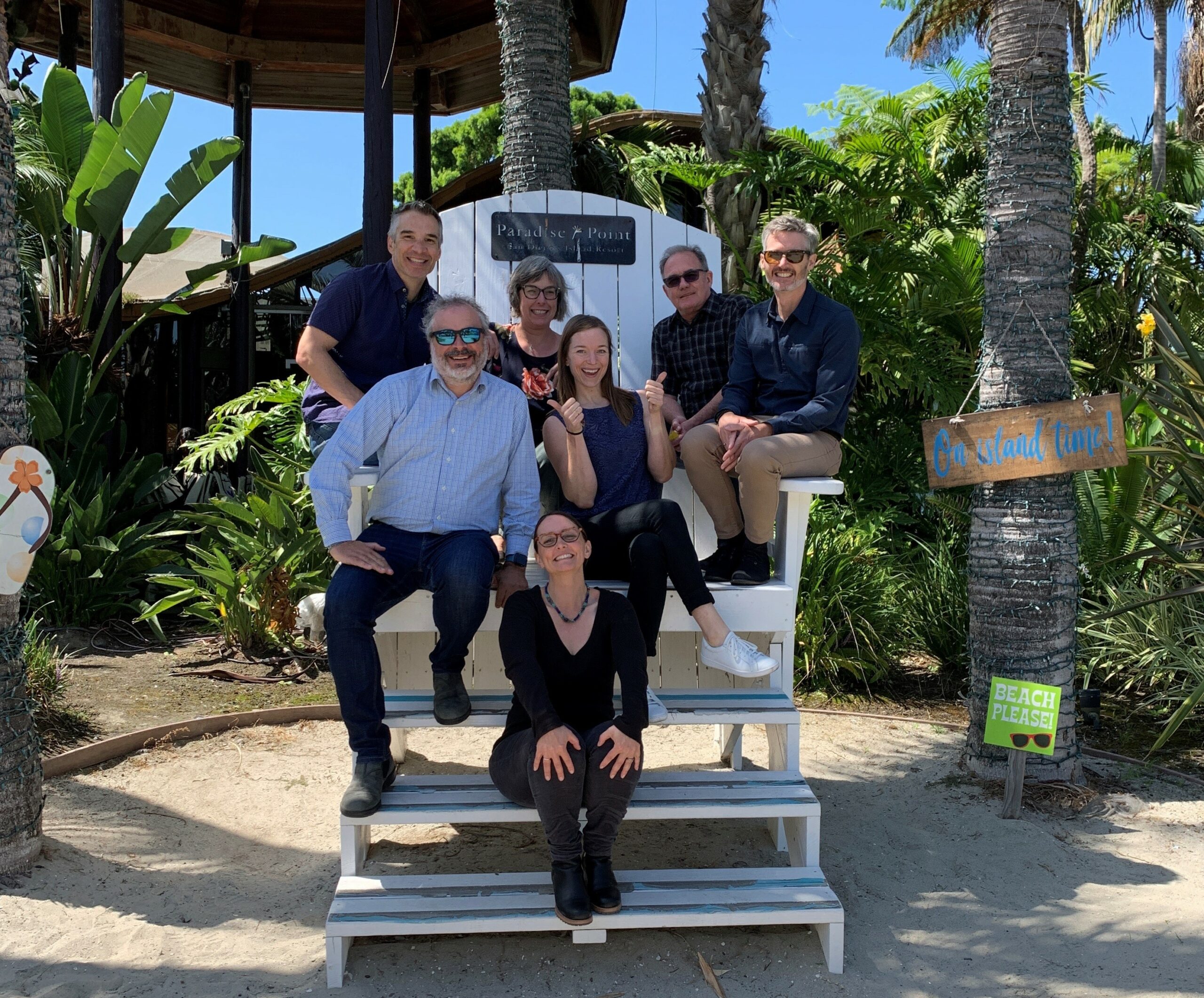In September, Herrerans Kate Forester, Christina Merten, Chris Webb, Dylan Ahearn, John Lenth, Craig Doberstein, Olivia Wright, Stacy Luell, and Rob Zisette attended the California Stormwater Quality Association (CASQA) Conference in San Diego, CA. The purpose of this conference is to advance sustainable stormwater management and protect California’s water resources. It was a great opportunity to connect with other experts in the field and bring back new ideas and approaches to addressing the stormwater challenges and water resources.

Hererra presented on the following projects:
WSDOT’s Innovative, Nature-Based Approach for Simultaneous Stormwater Flow and Stream Mitigation Within an Interstate Corridor
Presented by Christina Merten
- The Washington State Department of Transportation's State Route 167 Completion Project aims to construct six miles of new highway in the Puyallup/White River Watershed, integrating an innovative watershed-based approach to mitigate stormwater runoff, reduce flooding, and restore streams. By collaborating with the Washington State Department of Ecology, the project received approval for alternative flow control compliance while addressing climate resilience concerns. The project involves realigning and widening stream channels, restoring native vegetation, and enhancing wetlands within the project right-of-way to maximize ecological benefits. The presentation highlights the project's interdisciplinary design, regulatory coordination, and climate change considerations, serving as an example of holistic watershed restoration in large transportation projects. King County in Washington State is dedicated to substantial water quality enhancements and has developed the Water Quality Benefits Evaluation (WQBE) Toolkit, featuring computational models like the System for Urban Stormwater Treatment and Analysis Integration (SUSTAIN). SUSTAIN creates optimization curves presenting cost-effective action packages for targeted pollutant reductions. These insights, showcased in an interactive Optimization Viewer, enable municipalities to tailor stormwater strategies to their unique areas, bolstering water quality improvements in King County.
Modelers on the Fly – Building Tools To Support Municipalities With Sustainable Stormwater Management in King County, WA
Presented by Olivia Wright
- King County is committed to making big investments in water quality over the next decade and has developed the Water Quality Benefits Evaluation (WQBE) Toolkit, featuring models like the System for Urban Stormwater Treatment and Analysis Integration (SUSTAIN). This toolkit brings science to the decision makers and helps identify stormwater investment strategies that can make the biggest impact on water quality and improve outcomes for people, salmon, and orca. Output from SUSTAIN models consist of optimization curves that identifies the most cost-effective stormwater treatment investments for targeted pollutant reductions. These insights are showcased in an interactive Optimization Viewer that enables municipalities to identify stormwater strategies unique to their areas and water quality improvement goals.
POST Media Development and the Park Place Stormwater Facility: A Low-Cost Novel Treatment Media and an Actively Dosed Regional Treatment Facility Design
Presented by Chris Webb and Dylan Ahearn
- This Washington State project near Bellingham addressed phosphorus reduction in stormwater runoff by developing an open-source high-rate stormwater treatment media called Phosphorus-Optimized Stormwater Treatment (POST). The project included lab research, a pilot test facility, and the construction of the Park Place Stormwater Facility (PPSF), a regional facility treating 95% of the runoff from a 178-acre basin using the POST system. The PPSF, featuring a novel Programmable Logic Controller (PLC) dosing system, not only met Total Maximum Daily Load (TMDL) goals but also received recognition for its innovation and cost-effectiveness at the 2023 Washington State ACEC Engineering Excellence Awards.
Street Sweeping Studies in the Pacific Northwest: Lessons Learned for Conventional Stormwater Pollutants and New Research Targeting Emerging Contaminants of Concern
Presented by John Lenth
- Roads and transportation surfaces contribute significantly to urban pollution, prompting the adoption of street sweeping as a cost-effective practice to remove pollutants. This presentation addresses the lack of field studies on the benefits of street sweeping, summarizing past and ongoing research in the Pacific Northwest. Initial studies focused on conventional stormwater pollutants, but current research emphasizes the removal of 6PPD-quinone, linked to urban runoff mortality in coho salmon. Findings from the 2009 Seattle Street Sweeping Pilot Study demonstrate that street sweeping is 2 to 10 times more cost-effective in removing total suspended solids compared to regional stormwater facilities. Follow-up studies in Seattle and Redmond further highlight the significant reduction in sediment and copper concentrations with increased street sweeping frequency. Ongoing studies, including a ten-year analysis of stormwater pollutants in sweeper waste, aim to validate and expand these findings, emphasizing the importance of street sweeping for environmental benefits.
Floating Treatment Wetlands as a Cost-Effective, Nature-Based Solution To Increase Ecosystem Services in Urban Waters and Stormwater Ponds
Presented by Rob Zisette
- Urbanization has led to increased water quality and habitat challenges in cities situated on modified riverbanks and wetlands. Floating treatment wetlands, exemplified by projects in France, the United Kingdom, the United States, and Scotland, offer a cost-effective solution. These systems not only enhance water quality by reducing pollutants but also provide habitat improvement, shoreline erosion control, aesthetic benefits, and recreational features, as demonstrated in various global case studies.
The Race to the Bottom: How BMP Manufacturers Building Progressively Smaller Filters is Impacting our Waterways
Presented by Dylan Ahearn
- The global manufactured stormwater treatment device (MTD) market is expected to reach $23.7 billion by 2028, growing at an annual rate of 8.2%. Manufacturers are increasingly focusing on developing MTDs with higher flow rates and smaller footprints, resulting in a 6x decrease in filter size over the past decade. However, this trend raises concerns about the adequacy of current maintenance practices, as these smaller MTDs require more frequent maintenance to remain functional. The presentation discusses the approval processes of national standards (NJCAT and TAPE), highlighting the challenges of high loading rates and maintenance requirements, and emphasizes the need for resilient, post-construction, flow-based Best Management Practices (BMPs).
We are already looking forward to CASQA 2024!